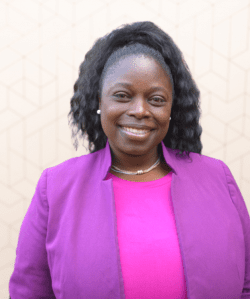As Black History Month comes to an end, we look ahead to how clinical trials can include more diverse patient populations. In this blog, our Head of Business Development, Leticia Murray, writes about her perspective on what needs to change to achieve more equal representation. Coming out of college I knew I always wanted to work in healthcare but I never quite knew where. I took an administrative job working in the Department of Neurology and Neurosurgery at a clinic in Jacksonville, Florida. I would triage new patient cases and it required a lot of phone work. I was always speaking to patients and enjoyed connecting with them. Fast forward to today, I am solely focused on working in patient recruitment through my work with Innovative Trials and I enjoy it immensely. We need patients to help us drive forward medicine, but clinical trial participation is definitely not as diverse as I think everyone in the industry would like. How can we possibly make treatments for all people if we don’t have different populations participating and contributing to the science? When it comes to including people from Black, Asian and minority ethnic (BAME) communities in trials, we know there’s under-representation across the board, but also in some therapy areas more than others. It personally drives me because I want to connect patients from all walks of life with research, just like everyone at Innovative Trials does. Something that has been studied quite extensively is that if people were more aware of clinical trials, if they just had more information, more people would participate. Similarly, healthcare providers and clinicians have indicated in the past that they would be more likely to refer patients to a trial if they knew about it. This is important because clinicians can hold the key to connecting some of these patients to trials because they are trusted healthcare professionals. This shows we all have to do a better job of informing people and need to be more innovative with how we are reaching them. We can’t afford to be one-dimensional. Education is another important aspect of raising awareness. Generally speaking, some people are simply not aware of what clinical research is. We need to empower people by giving them the necessary knowledge about what clinical trials are and what’s involved, how you can find them, and what to do if you’re diagnosed with a medical condition and your doctor, in discussing all of your treatment options, fails to mention an opportunity to participate in a clinical trial. Sometimes people aren’t asked to participate in a clinical trial because of unconscious bias. We all need to be aware of this and rather than assume someone will not want to sign up to a trial, and make it a matter of practice and habit to ask everyone who is eligible. Again, it’s important to lead with education – why it matters, why it may matter to them – and then give them relevant materials that they can take away and find out more. Then it’s a matter of time. Giving people time to make a decision Over the past several years I have seen more of a conversation about diversity inclusion, but this does not go far enough. In the US, the Food and Drug Administration (FDA) has placed a lot of emphasis on creating more patient-centric trials and increasing diversity in research – these policies and initiatives highlight the need for intentional action, not just a conversation. But this won’t be an overnight change. The industry must make a long-term investment in implementing initiatives to increase diversity and continue to implement, evolve and adjust until we find what’s working to help bridge the gap. This requires immense innovation and the ability to adapt. Investment should be in both digital and grassroot engagement with communities. While we can reach many people online, there are a lot that we can’t. It’s something we – Innovative Trials – recognised a long time ago some time ago and why we launched services like community outreach to help increase awareness of trials in the community. Building relationships are vital: if you’re approaching someone who’s never participated in a trial, there could be underlying trust issues. Maybe it’s even the first visit – maybe you haven’t even developed a relationship with that individual as a care partner. Don’t make that the day when you need a decision. It’s important to give people an opportunity to discuss the research and the idea of participation. Invite their family in on the discussion too and bring other key stakeholders into the room like their family doctor. We have to look at ways like this to work with communities so that we can gain their trust and their buy-in when it comes to research. More broadly, I feel we need more minimum targets for the inclusion of BAME groups established and for sites – and ourselves – to be held accountable. Reflecting on a prior Alzheimer disease trial that I led, the target was 25% for all sites and screening stopped at 3 if the site did not enroll any participants identifying as belonging to a BAME group. So, the targets don’t have to be large, but imagine a world where we take that risk as an industry to design such a protocol which keeps us accountable. We know some medications don’t work as expected on certain populations because the drugs weren’t thoroughly investigated in those populations, so I don’t see diversity as optional. It’s a requirement. Find out how we’re working with clients to ensure greater patient diversity in clinical trials. To reach Leticia, contact her here.
Awareness of clinical trials in diverse patient populations
What needs to change to promote diversity in research
